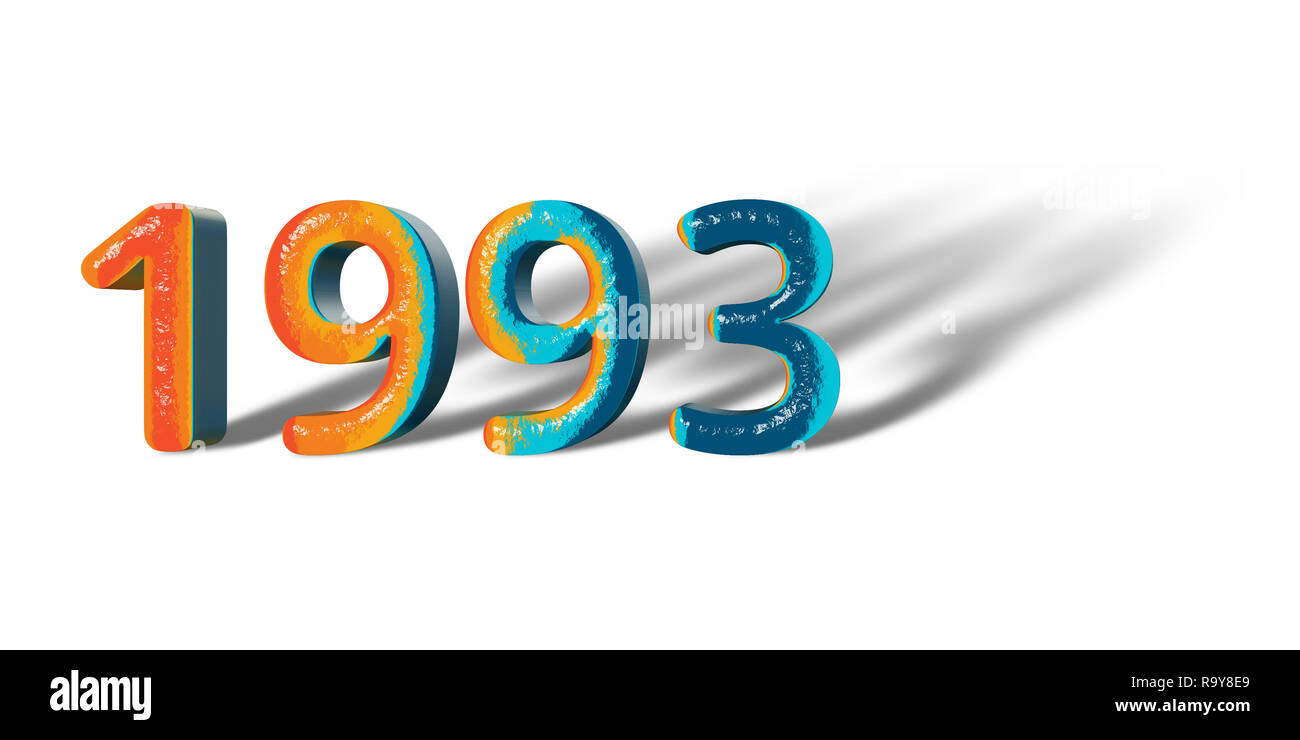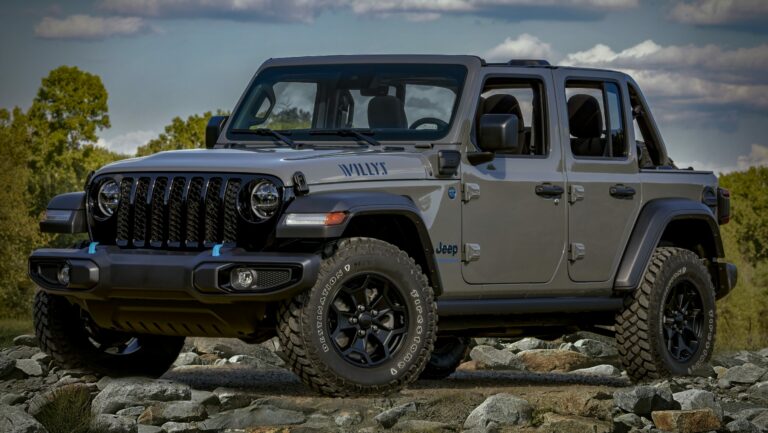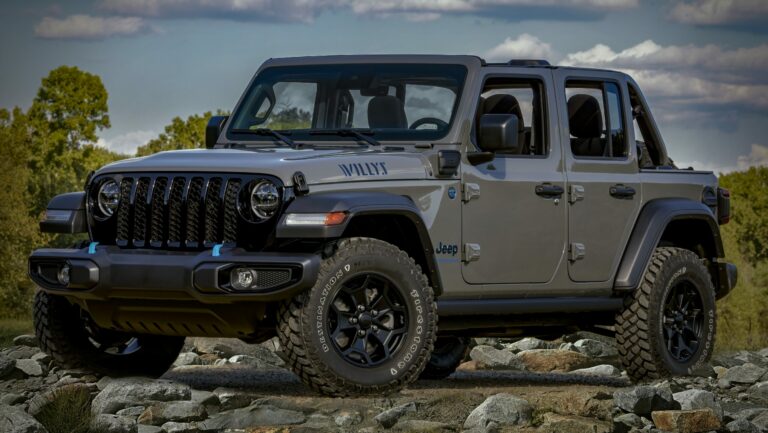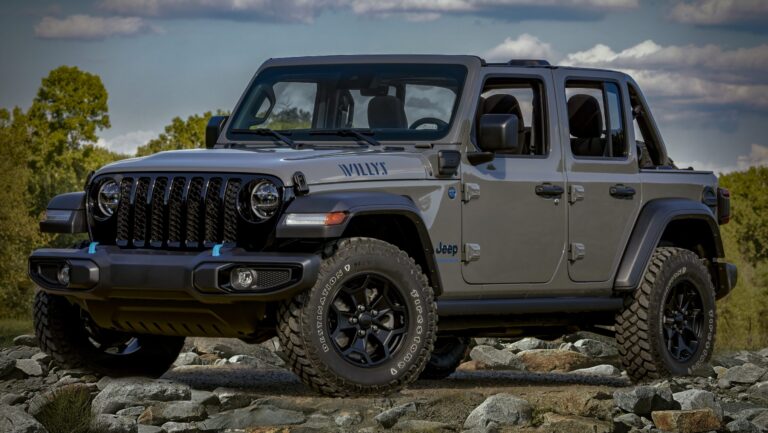1993 Jeep Cherokee For Sale: Your Gateway to Classic Off-Road Adventure
1993 Jeep Cherokee For Sale: Your Gateway to Classic Off-Road Adventure /jeeps.truckstrend.com
In the vast landscape of automotive history, few vehicles command the same enduring respect and admiration as the Jeep Cherokee XJ. And among its venerable lineage, the 1993 model year holds a special place, representing a sweet spot of rugged simplicity, legendary reliability, and timeless design. If you’ve ever dreamt of owning a true American icon, a vehicle equally at home navigating challenging trails or cruising urban streets, then a "1993 Jeep Cherokee For Sale" isn’t just an advertisement – it’s an invitation to an automotive legacy.
This article serves as your comprehensive guide to understanding, evaluating, and ultimately acquiring a 1993 Jeep Cherokee. We’ll delve into why these vehicles remain so popular, what to look for when buying, how to maintain them, and what challenges you might encounter, ensuring you’re well-equipped to make an informed decision and embark on your own XJ adventure.
1993 Jeep Cherokee For Sale: Your Gateway to Classic Off-Road Adventure
Why the 1993 Jeep Cherokee Still Matters: The Enduring Appeal of the XJ
The 1993 Jeep Cherokee XJ isn’t just an old SUV; it’s a testament to robust engineering and a design philosophy that prioritized function over frills. Its enduring appeal stems from several key factors that continue to make it a highly sought-after vehicle:
- Legendary Durability and Reliability: At the heart of most 1993 Cherokees lies the venerable AMC 4.0L "Renix" straight-six engine. This powerplant is renowned for its incredible longevity, often exceeding 200,000 or even 300,000 miles with proper maintenance. It’s a torquey, dependable workhorse, perfect for both daily driving and off-road excursions.
- Unmatched Off-Road Capability: Born from the Jeep lineage, the XJ is inherently capable. Its unibody construction (a pioneering design for an SUV at the time), solid axles (Dana 30 front, Chrysler 8.25 or Dana 35 rear), and robust four-wheel-drive systems (Command-Trac NP231 or Selec-Trac NP242) provide exceptional articulation and traction, making it a formidable contender on trails that would leave many modern SUVs stranded.
- Simplicity and Ease of Maintenance: Unlike contemporary vehicles laden with complex electronics, the 1993 XJ is relatively straightforward. This means easier diagnosis for mechanical issues, readily available parts (often at affordable prices), and a vibrant community of DIY enthusiasts who share knowledge and resources.
- Affordability: Compared to newer SUVs with similar capabilities, a 1993 Jeep Cherokee can be acquired at a fraction of the cost, offering incredible bang for your buck, especially if you’re willing to put in some TLC.
- Customization Potential: The aftermarket support for the XJ is immense. Lift kits, bumpers, armor, drivetrain upgrades, and countless other modifications are available, allowing owners to tailor their Cherokee to their specific needs, whether for extreme rock crawling or overlanding.
- Classic Status and Nostalgia: For many, the XJ represents a simpler time in automotive design. It evokes a sense of adventure, freedom, and a connection to the raw spirit of off-roading. Owning one is owning a piece of American automotive history.
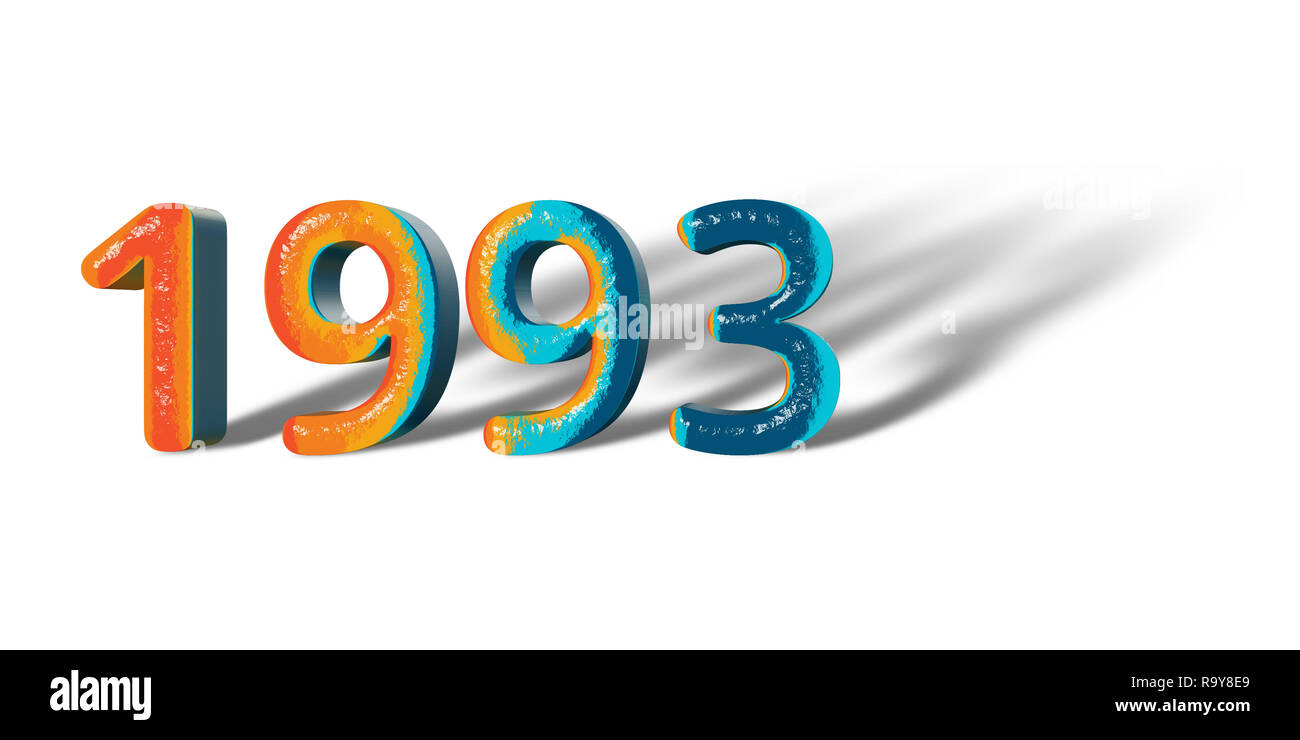
Key Features and Specifications of the 1993 Model Year
The 1993 Jeep Cherokee offered a range of configurations to suit different buyers. Understanding these can help you identify the right vehicle for your needs:
- Engines:
- 4.0L High Output (HO) I6: This inline-six cylinder engine, producing around 190 horsepower and 225 lb-ft of torque, is the most common and highly sought-after engine. Its low-end torque is excellent for off-roading.
- Less Common: A 2.5L AMC I4 engine was also available, offering better fuel economy but significantly less power, primarily found in 2WD or base models.
- Transmissions:
- Automatic: The Aisin-Warner AW4 4-speed automatic transmission is legendary for its durability and smooth operation.
- Manual: A 5-speed manual transmission (AX-15) was also offered, appealing to purists and those who prefer more direct control.
- Drivetrain Options:
- 2WD: Less common, but available for those who don’t need 4×4 capability.
- Command-Trac (NP231): A part-time 4WD system, meaning it should only be used on loose surfaces (dirt, snow, mud) as it lacks a differential between the front and rear axles. It offers 2WD High, 4WD High, and 4WD Low.
- Selec-Trac (NP242): A full-time 4WD system, allowing it to be used on paved roads in 4WD Full-Time mode, in addition to 2WD High, 4WD Part-Time High, 4WD Part-Time Low, and Neutral. This is generally preferred for its versatility.
- Trim Levels: The 1993 XJ came in several trims, each offering different levels of features and aesthetics:
- Base (SE): The most spartan, often with manual windows and locks.
- Sport: Added sportier seats, body-color bumpers, and sometimes alloy wheels.
- Laredo: A popular mid-range trim with power windows/locks, air conditioning, cruise control, and often a more upscale interior.
- Limited: Top-tier trim, featuring leather seats, power amenities, unique wheels, and more luxury features.
- Country: Similar to Limited but with a more woodgrain-accented, "country club" aesthetic.

What to Look For When Buying a 1993 Jeep Cherokee (The "How-To" Guide)
Acquiring a 1993 XJ requires a thorough inspection. These vehicles are 30 years old, and their condition will vary wildly. Here’s a comprehensive checklist:
-
Rust, Rust, Rust: This is the biggest enemy of the XJ.
- Rocker Panels: Check thoroughly, especially behind the front wheels.
- Floorboards: Look under the carpet, especially near the front seats and footwells.
- Rear Quarter Panels: Around the wheel wells and behind the rear tires.
- Frame Rails: While unibody, the "frame" sections are susceptible.
- Under the Battery Tray: Acid leaks can cause significant rust.
- Door Sills and Hatch Sill: Common water trapping points.
- Solution: Minor surface rust can be addressed, but extensive structural rust is a deal-breaker unless you’re planning a full restoration.
-
Engine (4.0L I6):
- Listen: Start cold. Listen for knocking (rod bearings), ticking (lifters, exhaust manifold crack), or strange noises.
- Leaks: Common spots include the rear main seal (oil pan/transmission bellhousing), valve cover gasket, and oil filter adapter. Minor leaks are common; major leaks are a concern.
- Cooling System: Check the radiator (for leaks, corrosion), hoses, and condition of the coolant. Ensure the electric fan kicks on when the A/C is on or temperature rises.
- Oil: Check the dipstick. Look for proper level and color (not milky, not extremely dark).
- Exhaust Manifold: Cracks are very common, leading to a ticking sound, especially when cold. It’s not critical but requires replacement for silence.
-
Transmission (AW4 Automatic):
- Fluid: Check fluid level and color (should be red, not brown or black, and shouldn’t smell burnt).
- Shifts: Test all gears, including reverse. Shifts should be smooth, not harsh or delayed. Listen for clunking during engagement.
- Manual (AX-15): Check clutch engagement, smooth shifting, and any grinding.
-
Drivetrain (4WD):
- Test All Modes: Engage 4-High and 4-Low (if NP231 or NP242). Drive slowly in a straight line on a loose surface. Listen for grinding or clunking.
- U-Joints: Check driveshaft and axle U-joints for play or clunking sounds, especially when accelerating from a stop.
- Differentials: Listen for howling or grinding, indicating worn gears or bearings. Check for leaks.
-
Suspension and Steering:
- Lift Kit? If lifted, inquire about the quality of components and installation.
- Shocks/Springs: Look for leaks on shocks. Springs should not be sagging excessively.
- Bushings: Check control arm bushings, sway bar bushings for cracks or wear.
- Steering Play: Excessive play in the steering wheel could indicate a worn steering box, tie rod ends, or ball joints.
- "Death Wobble": While more common in lifted XJs, inquire if the vehicle has ever experienced this violent shimmy at speed. It indicates worn steering or suspension components.
-
Brakes and Tires:
- Brakes: Test for firm pedal feel, no pulling to one side, and no grinding noises.
- Tires: Check tread depth, even wear, and age (indicated by DOT code).
-
Electrical and Interior:
- All Lights: Headlights, taillights, turn signals, brake lights, interior lights.
- Power Accessories: Windows, door locks, mirrors, radio, A/C, heater, fan speeds. A/C systems often need a recharge or repair due to age.
- Gauges: Ensure all gauges (oil pressure, temp, voltage, fuel) work.
- Headliner: Sagging headliners are very common.
- Seats: Check for tears, stains, and functionality of adjustments.
-
Documentation:
- Service Records: A strong history of maintenance is a huge plus.
- Clear Essential. Check VIN on title matches vehicle.
-
Pre-Purchase Inspection (PPI): If you’re serious, invest in a PPI by a trusted mechanic familiar with Jeeps. It’s the best money you’ll spend.
Maintaining Your Classic XJ: Tips for Ownership
Once you’ve acquired your 1993 Cherokee, proactive maintenance is key to its longevity:
- Regular Fluid Changes: Engine oil (every 3,000-5,000 miles), transmission fluid, transfer case fluid, and differential fluids.
- Cooling System Overhaul: If not recently done, consider replacing the thermostat, water pump, radiator, and all hoses. This is crucial for the 4.0L.
- Address Leaks Promptly: Don’t ignore minor leaks; they can worsen and lead to bigger problems.
- Rust Prevention: Wash the undercarriage regularly, especially if you live in a snowy climate or drive on salty roads. Consider undercoating or rust inhibitors.
- Lubricate U-Joints: If equipped with greaseable U-joints, regular greasing extends their life.
- Listen to Your Jeep: Pay attention to new noises, vibrations, or smells. The XJ is usually good at telling you when something is amiss.
Potential Challenges and Solutions
While the 1993 XJ is reliable, it’s not without its quirks and challenges due to its age:
- Challenge: Rust.
- Solution: Thorough pre-purchase inspection. For minor rust, address it with grinding, rust converters, and protective coatings. For significant structural rust, professional repair is costly; consider if the vehicle is worth the investment.
- Challenge: Aging Components.
- Solution: Expect to replace wear items like sensors, hoses, belts, and suspension components. Parts are generally affordable and readily available.
- Challenge: Fuel Economy.
- Solution: The 4.0L is robust but thirsty, typically averaging 15-18 MPG. It’s a trade-off for reliability and capability. Don’t expect hybrid-like numbers.
- Challenge: Lack of Modern Safety Features.
- Solution: The 1993 XJ predates many modern safety innovations like multiple airbags, advanced ABS, and stability control. Drive defensively, ensure brakes and tires are in excellent condition, and consider safety upgrades if available (e.g., better headlights).
- Challenge: Finding a Well-Maintained Example.
- Solution: Patience is key. Be prepared to travel or wait for the right vehicle. A higher initial price for a well-cared-for XJ will save you money and headaches in the long run. Avoid "bargains" that are truly neglected projects unless you’re prepared for extensive work.
Practical Advice and Actionable Insights
- Define Your Use Case: Are you seeking a daily driver, a weekend off-roader, or a restoration project? Your intended use will heavily influence what condition you should accept and what features are most important.
- Set a Realistic Budget: Factor in not just the purchase price, but also potential immediate repairs, maintenance, insurance, and possibly a budget for upgrades if you plan to modify it.
- Join the Community: Online forums (like CherokeeForum.com, NAXJA.org) and local Jeep clubs are invaluable resources for advice, parts, and troubleshooting.
- Don’t Rush: Take your time, inspect thoroughly, and don’t be afraid to walk away if something doesn’t feel right. There are always other Cherokees for sale.
Price Guide for a 1993 Jeep Cherokee For Sale
The price of a 1993 Jeep Cherokee can fluctuate significantly based on its condition, mileage, trim level, modifications, and geographical location. The table below provides a general guide:
| Condition Category | Estimated Price Range (USD) | Key Factors Affecting Price | Example Features/Issues |
|---|---|---|---|
| Project/Parts | $500 – $2,500 | Significant mechanical issues, heavy rust, non-running. | Blown engine/transmission, severe frame rust, missing interior components, non-op title, suitable for parts donation or complete rebuild. |
| Fair | $2,500 – $5,000 | Runs and drives, needs significant work (mechanical/cosmetic). | High mileage (200k+), visible rust (surface to moderate), worn interior, potential fluid leaks, aging suspension, likely needs tires, brakes, and major tune-up. Suitable for a DIY enthusiast with time and tools. |
| Good | $5,000 – $9,000 | Mechanically sound, minor cosmetic flaws, well-maintained. | Moderate mileage (100k-200k), minimal to no significant rust, clean interior with minor wear, all major systems (engine, transmission, 4WD) functioning correctly. May have minor dents/scratches, faded paint, or minor electrical quirks. |
| Excellent | $9,000 – $15,000+ | Low mileage, meticulously maintained, minimal flaws, original. | Low mileage for its age (under 150k, sometimes under 100k), minimal to no rust, pristine interior, recent major service, fully functional AC, power windows, etc. May be a highly original example, potentially a "survivor" or a well-executed mild restoration. Rare find. |
| Modified/Resto | $7,000 – $20,000+ | High-quality aftermarket parts, professional build, specific upgrades. | Lift kits, heavy-duty bumpers, winches, lockers, engine upgrades, custom interiors, full restorations. Price heavily depends on quality and extent of modifications, potentially exceeding "Excellent" category for top-tier builds. |
Frequently Asked Questions (FAQ)
Q1: Is the 4.0L engine in the 1993 Jeep Cherokee truly reliable?
A1: Yes, the 4.0L HO inline-six is legendary for its reliability and longevity. With proper maintenance, it can easily last well over 200,000 miles.
Q2: What kind of fuel economy can I expect from a 1993 XJ?
A2: Expect around 15-18 miles per gallon (MPG) combined for a 4.0L 4×4. This can vary based on driving style, terrain, and modifications (like larger tires or lift kits).
Q3: Are parts for the 1993 Jeep Cherokee still easy to find?
A3: Absolutely. Due to the XJ’s popularity and long production run, most parts (both OEM and aftermarket) are readily available and often affordable.
Q4: Can a 1993 Jeep Cherokee be a reliable daily driver?
A4: Yes, a well-maintained 1993 XJ can serve as a reliable daily driver. However, be prepared for less modern comforts and safety features compared to newer vehicles. Regular preventative maintenance is key.
Q5: What’s the difference between Command-Trac (NP231) and Selec-Trac (NP242)?
A5: Command-Trac (NP231) is a part-time 4WD system, meaning it should only be used on loose or slippery surfaces. Selec-Trac (NP242) is a full-time 4WD system, which can be used on paved roads in its "Full-Time" mode, offering more versatility in varying weather conditions.
Q6: Is rust a major concern for the 1993 Cherokee?
A6: Yes, rust is arguably the biggest enemy of the XJ, especially in areas where salt is used on roads. Pay close attention to rocker panels, floorboards, and frame rails during inspection.
Q7: How much can I lift a 1993 Cherokee?
A7: Common lift heights range from 2-4.5 inches, offering a good balance of capability and street manners. Taller lifts are possible but require more extensive modifications and can introduce issues like "death wobble" if not properly set up.
Conclusion
The 1993 Jeep Cherokee XJ remains an automotive icon for good reason. It offers an unparalleled blend of rugged capability, mechanical simplicity, and timeless appeal. For those seeking a vehicle that can truly go anywhere, be easily maintained, and serve as a canvas for personalization, finding a "1993 Jeep Cherokee For Sale" represents a fantastic opportunity.
While purchasing a 30-year-old vehicle comes with its own set of considerations, a thorough inspection, a realistic budget, and a commitment to ongoing maintenance will ensure your classic XJ provides years of reliable service and countless adventures. Embrace the heritage, enjoy the journey, and experience the enduring spirit of the Jeep Cherokee.

